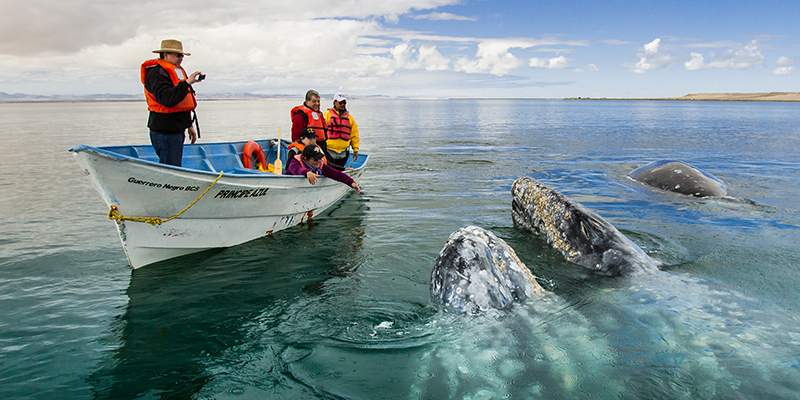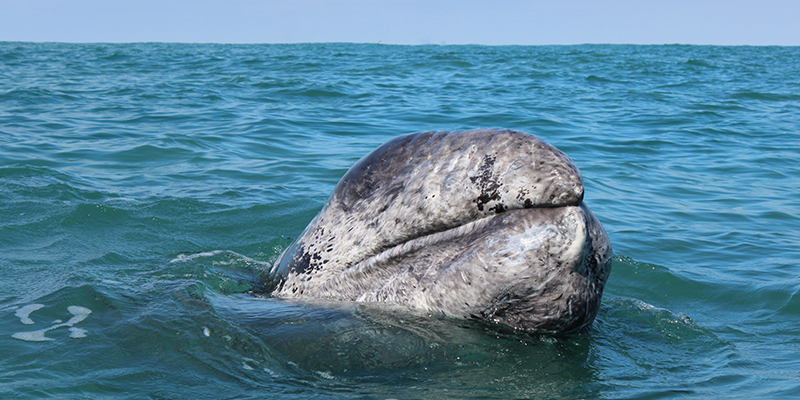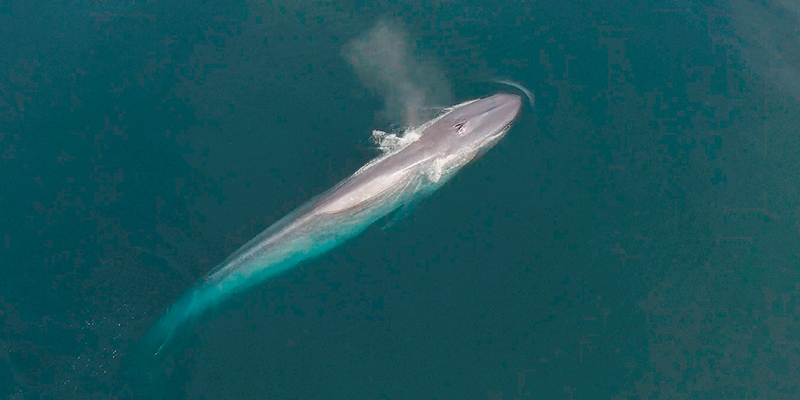Baja California Sur, a stunning region of Mexico, is renowned not only for its breathtaking landscapes, pristine beaches, and rich cultural history but also for being one of the world’s top destinations for whale watching. Each year, from January to April, the region becomes a haven for two of the ocean’s most awe-inspiring species: the gray whale and the blue whale. These gentle giants migrate to the warm waters of Baja’s lagoons, offering nature lovers, photographers, and wildlife enthusiasts a unique opportunity to witness one of the most extraordinary spectacles in the natural world.
The Gray Whale Migration: A Journey of Survival and Renewal
The gray whale (Eschrichtius robustus) is one of the most iconic species that visits Baja California Sur annually. These whales undertake one of the longest migrations of any mammal on Earth, traveling between 10,000 and 12,000 miles round-trip from their feeding grounds in the Bering and Chukchi Seas of the Arctic to the warm, protected lagoons of Baja California Sur.
The journey begins in late autumn as the Arctic waters freeze, and pregnant females lead the migration south, followed by the rest of the population. Their destination: the shallow, sheltered lagoons of Baja, where conditions are perfect for giving birth and nurturing their calves.
The Sanctuaries of the Gray Whale
Two primary lagoons in Baja California Sur serve as winter sanctuaries for the gray whales: Laguna Ojo de Liebre and Laguna San Ignacio. These natural havens, part of the El Vizcaíno Biosphere Reserve—a UNESCO World Heritage Site—provide a safe environment for whales to give birth, nurse their young, and mate before embarking on their long journey back to the Arctic.
Laguna Ojo de Liebre: Also known as Scammon’s Lagoon, this is the largest and most famous gray whale sanctuary in Baja. Located near the town of Guerrero Negro, thousands of gray whales can be seen swimming, resting, and caring for their calves here. It’s a prime spot for boat tours, where whales often approach the vessels, offering visitors a once-in-a-lifetime chance to interact with these gentle giants.
Laguna San Ignacio: Located further south, this lagoon is smaller and more remote, providing a quieter, more serene environment. San Ignacio is renowned for its conservation efforts, with local communities working alongside international organizations to ensure sustainable whale-watching practices. The gray whales here are known for their curiosity and playfulness, frequently approaching small boats for close encounters.
Other Whale Watching Spots: Bahía Magdalena
While Bahía Magdalena is not a primary gray whale sanctuary, it remains a notable spot for whale watching. Located on Baja’s Pacific coast, Bahía Magdalena is a vast system of bays and islands, offering a resting place for migrating gray whales. Visitors can witness these majestic creatures as they rest and feed before continuing their journey.
Gray Whale Behavior: A Unique Bond with Humans
One of the most extraordinary aspects of gray whales in Baja California Sur is the unique relationship they’ve developed with humans. Known for their curiosity and friendly nature, gray whales often approach whale-watching boats in the lagoons, earning them the nickname “friendly whales.” Visitors often experience unforgettable encounters where whales, sometimes even mothers, bring their calves close to the boats, as if introducing them to the humans.
This behavior is unique among whale species and speaks to the trust the whales have developed in the safety of Baja’s protected lagoons. It’s not uncommon for visitors to touch or even “kiss” the whales during these encounters, creating memories that last a lifetime.
Conservation Efforts: Protecting the Gray Whale’s Sanctuary
The protection of gray whale sanctuaries in Baja California Sur is a true conservation success story. By the mid-20th century, gray whales were on the brink of extinction due to overhunting. However, with international bans on whaling and the designation of protected areas like the El Vizcaíno Biosphere Reserve, the gray whale population has rebounded. Today, gray whales are no longer considered endangered, and the lagoons of Baja continue to be crucial to their survival.
Strict regulations govern whale watching in Baja’s sanctuaries. Local tour operators must follow guidelines that minimize the impact on the whales, ensuring these gentle giants continue to thrive in their winter home.
The Blue Whale: The Ocean’s Titan
While the gray whale often takes center stage in Baja’s lagoons, the blue whale (Balaenoptera musculus) also makes a spectacular appearance in Baja California Sur’s waters. The blue whale, the largest animal on Earth, can reach lengths of up to 100 feet and weigh as much as 180 tons. These ocean titans migrate to the Sea of Cortez each winter to feed on the region’s abundant supply of krill.
Unlike gray whales, blue whales are more elusive and challenging to spot, but Baja California Sur offers one of the best chances to see these giants in their natural habitat.
Blue Whale Watching in the Sea of Cortez
The Sea of Cortez, also known as the Gulf of California, is often called the “Aquarium of the World” due to its incredible biodiversity. It’s here, in the deep waters off the coasts of Loreto and nearby areas, that blue whales can be spotted from January through April. The Loreto Bay National Park, a UNESCO World Heritage Site, is one of the prime locations to see these majestic creatures, along with other whale species, dolphins, and marine life.
In the Sea of Cortez, blue whales are often observed feeding, as the area is rich in krill, their primary food source. Observing a blue whale in the wild is an awe-inspiring experience. Despite their enormous size, blue whales are graceful, often surfacing for extended periods, giving onlookers ample time to marvel at their sheer magnitude.
Conservation Status of the Blue Whale
Unlike the gray whale, the blue whale remains endangered. Years of commercial whaling in the 19th and 20th centuries decimated their population, and despite international protections, the species has been slow to recover. Today, an estimated 10,000 to 25,000 blue whales remain in the world’s oceans, a fraction of their pre-whaling numbers.
Baja California Sur’s waters are critical to the blue whale’s survival, as they provide a key feeding area during the winter months. Conservation efforts in the region, including strict whale-watching guidelines, are vital to ensuring the long-term survival of the blue whale.
Whale Watching in Baja California Sur: An Unforgettable Experience
For anyone passionate about marine life, a visit to Baja California Sur during whale-watching season is a must. Whether you’re witnessing gray whales nurturing their calves in the lagoons or marveling at the sheer size of a feeding blue whale in the Sea of Cortez, the experience is unlike any other on Earth.
Whale-watching tours in Baja are highly regulated to protect these magnificent creatures. Local operators are committed to sustainable practices, ensuring that both gray and blue whales continue to visit the region for generations to come.
Conclusion: A Unique Connection Between Humans and Whales
Baja California Sur is not just a sanctuary for whales—it’s a sanctuary for the countless people who visit each year in search of a connection with nature. The region’s protected lagoons and rich marine environments offer a safe haven for gray and blue whales, as well as for other marine species.
For travelers, the chance to witness these ocean giants up close is a deeply moving experience, fostering a greater appreciation for the natural world and the need to preserve it. Whether you’re enchanted by a playful gray whale calf or awestruck by the grandeur of a blue whale, Baja California Sur offers an unforgettable adventure where wildlife and nature meet in perfect harmony.




